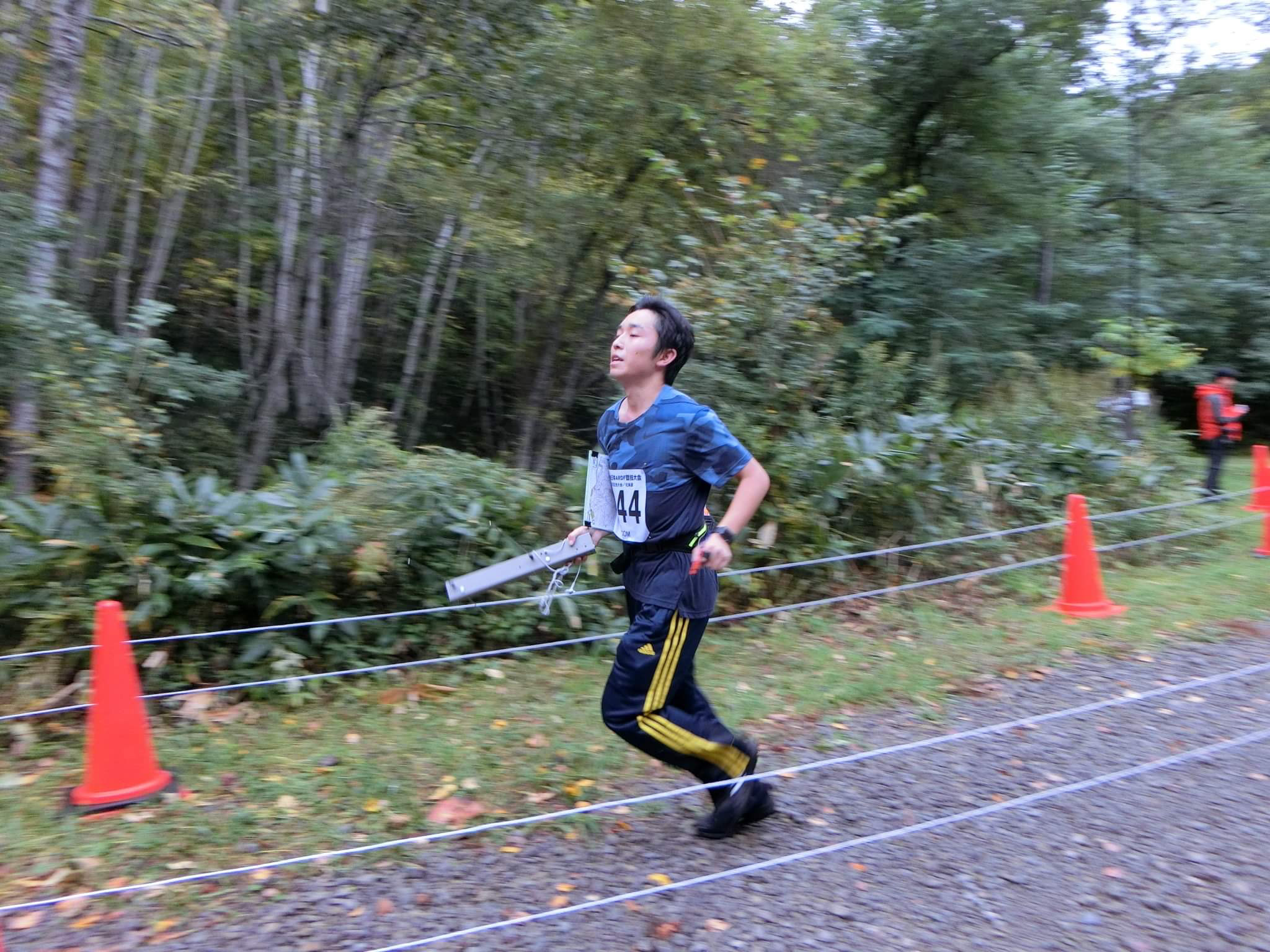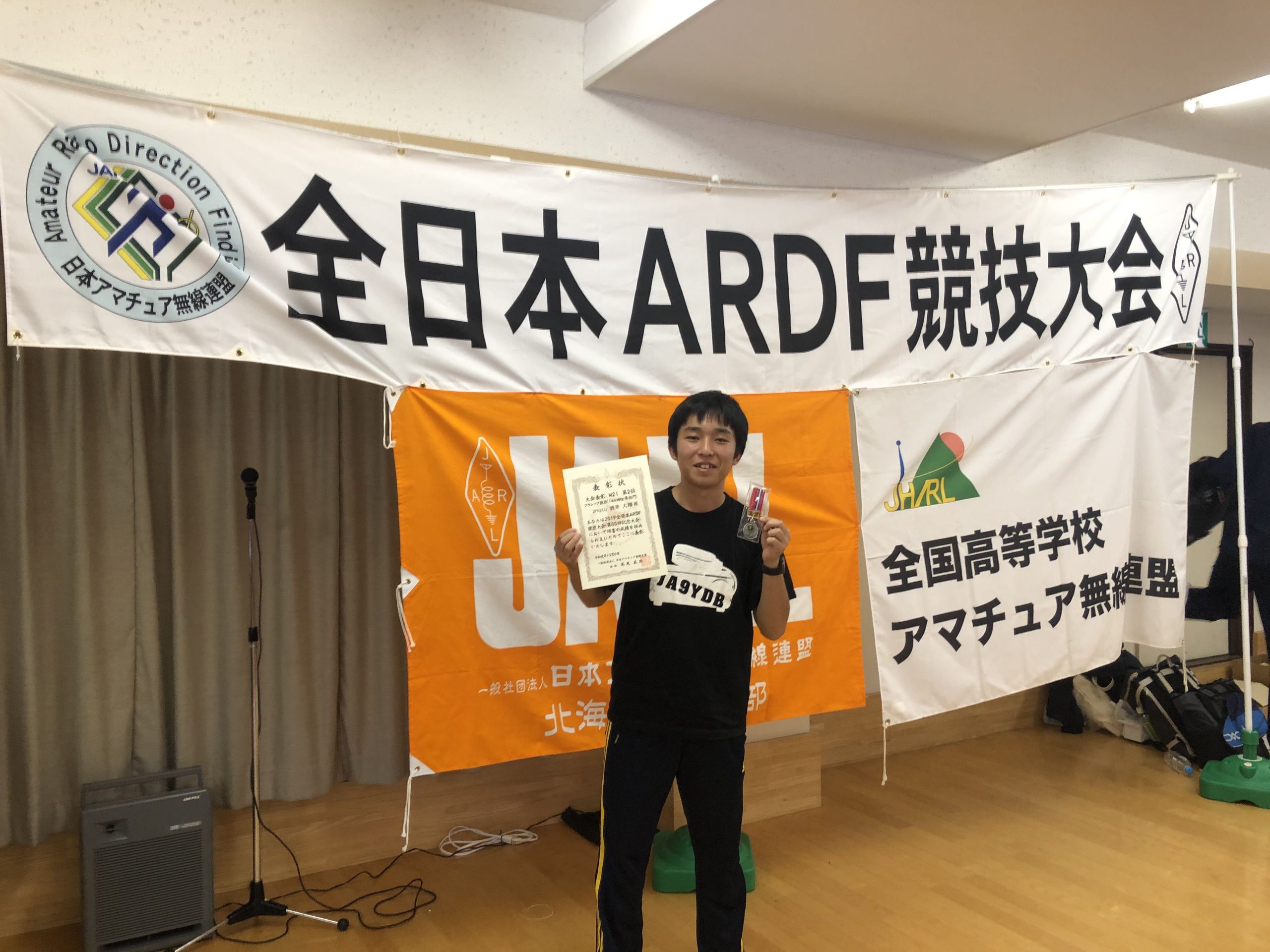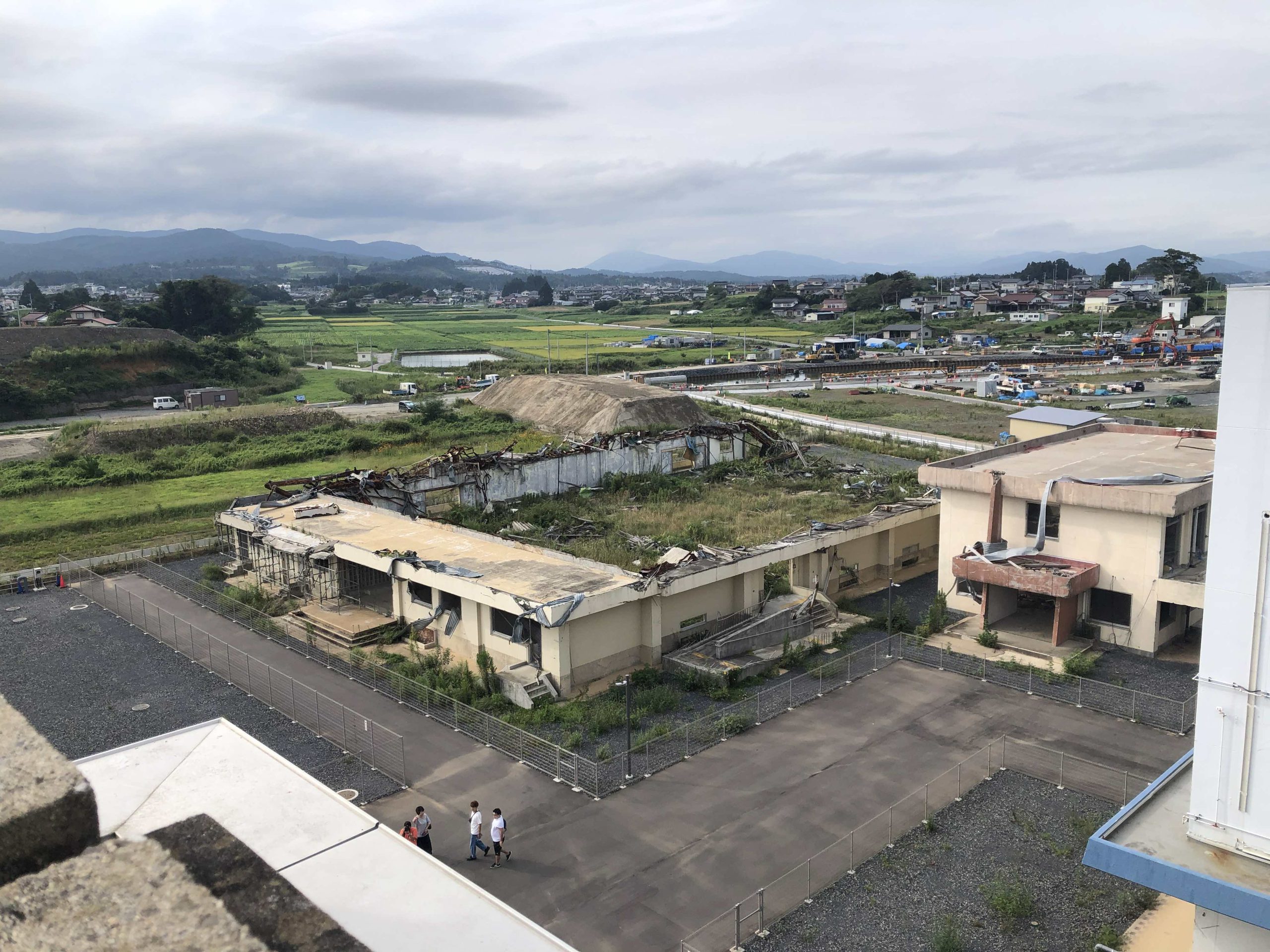Every year, participants from Japan go to a mountainous terrain to compete in a mental and physical game of hide and seek. Using maps and portable receiver, they search for five different hidden transmitters in a given timeframe. This activity is called Amateur Radio Direction Finding (ARDF, also known as radio orienteering, radio fox hunting and radio sport).
According to engineering student, Hiroto Sakai (HS), ARDF gives you the joy of finding, the fun of devising, and the ease of starting.
Born and raised in Fukui, he joined the Civil and Environmental Engineering Program at the Nagaoka University of Technology. The Nagaoka Review (NR) spoke with Hiroto Sakai to learn more about what led him to radio transmitter finding, engineering, and his goals in the future.
Hiroto Sakai, a student under the Civil and Environmental Engineering program at Nagaoka University of Technology
HS: I have been an amateur radio operator since I was 16 years old. When I was 19, I decided to try something new, so I joined the ARDF (Amateur Radio Direction Finding) competition.
The competition requires participants to find radio transmitters hidden in the outdoor field, using only amateur radio waves, maps, and compass in a diverse, wooded terrain. The competition has a time limit and participants are ranked based on the number of transmitters found and the time of completion.
The classical competition that I participated in had a time limit of 2 hours (while the sprint competition runs for an hour). In 2019, the event was held in Hokkaido, and I won the 2nd place in the M21 category. Sadly, the World Convention was cancelled due to COVID 19, but I was consulted to represent Japan. I wish to achieve excellent results in the next Japanese competition and go to the world competition.
HS: First of all, it is a fun and challenging outdoor activity. You will learn while you are having fun, for sure.
To find the hidden transmitters, we only used topographic maps and portable receiver and antenna to navigate and explore directions. This is so different from the fast and easy way of pulling out a smartphone and opening an app that will tell you where to go. There was none of that.
In the M21 category, we are required to find all five hidden transmitters, so we had to be analytical in terms of reading the signals sent by the transmitter (and analyzing where it is coming from) and to be quick (physically) to find all transmitters and finish within the timeframe.
Overall, it made me better in navigating the woods by using a map and compass only. Having locational awareness, knowing where we are or where we need to go, and coming up with the best way to navigate these different directions are things that one can learn from joining the ARDF competition.
NR: Aside from radio sport, what’s an obsession of yours that people may not know?
Hiroto Sakai shares some of the favorite sites during his trips around Japan
HS: I am currently enrolled in the Civil and Environmental Engineering program at Nagaoka University of Technology (NUT). Since I studied civil engineering at a technical college before transferring to NUT, it was a natural choice for me to expand my knowledge in the field and learn more about its theoretical and practical applications.
NR: Why did you choose this program?
HS: In 2011, Japan was damaged by the Great East Japan Earthquake. Two years later, when I was a junior high school student, my father took me to the damaged area in his car. The town had been washed away by the tsunami and there was rubble everywhere. I saw a car sticking out from the second floor of a school. The railroad and power lines were badly damaged, some washed away. It was a quite powerful scene, and from that day, I decided to choose civil engineering because I wanted to be involved in urban development.
In the future, I want to become a civil engineer who is involved in improving or saving lives directly. It could be in the form of implementing Japanese civil engineering technology in the design and/or construction of earthquake-resilient structures, clean-water technologies, bridge engineering, transportation engineering, etc. For as long as it keeps people safe, I think that will be a very fulfilling career.
HS: I have been in Nagaoka for seven months now. I am living on my own for the first time. Students who have graduated from technical colleges from all over Japan move to NUT. When I came to Nagaoka, I made friends with people from all over Japan. I was surprised to know that there are so many differences just within Japan, for example, dialects, food, culture, customs, and so on.
HS: There is a lot of snow in both Fukui and Nagaoka. Rice and Japanese sake are delicious in both locations, too. Given that both are also next to the Sea of Japan, there’s a variety of fresh fish to enjoy, beautiful nature, and relaxing onsens, too.
NR: What kind of resources does NUT provide to help you become successful as a student?
HS: NUT is a place where students can do what they want to do. Whether it is research activities or social activities, we have a great environment and supportive teachers to make it happen. For example, NUT is a school for engineers, but if you want to not only learn general engineering, but also acquire the ability to lead society in the future, there are educational programs and specialized classes here to make that happen.
NR: What should a student know about enrolling at NUT or taking a program in civil engineering?
HS: What you need to know is what you really want to do and what you want to be in the future. If you have a goal, you can think about what you should do now. NUT is a school specializing in engineering, but there are many different fields of engineering. Anything is OK. Once you enroll at NUT, you will be able to grow in a supportive environment and with supportive teachers.
NR: So what do you think radio transmitter finding and engineering have in common?
HS: I believe that ARDF and engineering have the following in common: the joy of finding, the fun of devising, and the ease of starting.
Engineering tends to be perceived as something difficult, but I think that taking action based on technical evidence, at any level, is in itself, engineering. In other words, anyone can take the first step at any time. It is important to find something new and inventive. The sense of accomplishment when you succeed is very great.
ARDF can be easily started by simply preparing a simple machine. Apart from competitions, there are also training sessions and practice sessions, so you can easily challenge yourself. There is a great sense of accomplishment when you are able to find a transmitter, or when your efforts to find one are successful.
I think both of them have something in common in that they can reach a higher level by repeatedly discovering and devising in their quest.














